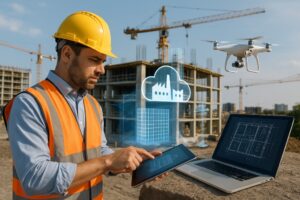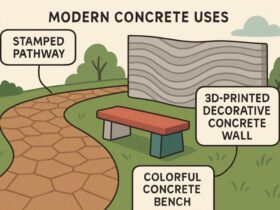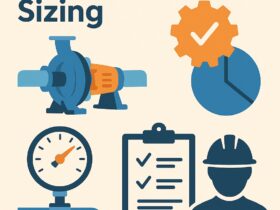
Table of Contents
- Introduction
- Building Information Modeling (BIM)
- Drones and Aerial Imaging
- Artificial Intelligence and Machine Learning
- Internet of Things (IoT)
- Virtual and Augmented Reality
- Robotics and Automation
- Blockchain Technology
- Sustainable Construction Practices
Introduction
Innovations in technology are dramatically elevating the standards, efficiency, and transparency across the general contracting industry. Modern contractors no longer rely solely on manual processes or paper-based workflows—instead, they leverage advanced digital tools to streamline project management and enhance collaboration. These advancements foster greater productivity and provide increased project transparency and much safer work environments. This means fewer surprises, predictable timelines, and better oversight at every stage for clients. For those searching for trusted experts pushing these boundaries, partnering with a local GC that embraces such technologies can make all the difference in ensuring project success from the earliest planning stages to completion.
As the construction sector grows increasingly complex and competitive, general contractors must integrate the latest technological tools to meet changing demands and client expectations. The landscape is evolving: from state-of-the-art digital modeling and precision drone surveys to AI-driven scheduling, IoT-enabled site monitoring, and blockchain-secured transactions, technological innovation is setting remarkable new expectations for every phase of the construction process. Those who invest wisely in these technologies are not just keeping up; they consistently outperform traditional competitors in quality, efficiency, and safety.
Building Information Modeling (BIM)
Building Information Modeling (BIM) has become a transformative force in construction, offering a shared digital representation of every aspect of a project. Unlike older systems where design, engineering, and construction teams operated in silos, BIM brings all stakeholders onto a single collaborative platform. Architects, engineers, contractors, and owners contribute and update project information within this centralized system, which helps identify and resolve design clashes before construction begins. This results in fewer errors, reduced rework, and significant cost savings. BIM’s detailed 3D models are invaluable for visualizing the project from every angle, allowing for better resource planning and risk identification. Furthermore, BIM enables efficient facilities management after construction, as all building data remains accessible throughout a structure’s lifecycle. PlanRadar details how BIM streamlines communication, boosts project delivery efficiency, and leads to greater client satisfaction.
Drones and Aerial Imaging
Drones are revolutionizing construction site management by providing high-resolution aerial imagery faster and more safely than traditional survey methods. Equipped with advanced cameras and sensors, drones can conduct comprehensive site surveys, monitor construction progress, and assess large or difficult-to-reach areas in real time. These drone-captured images and data sets support more accurate progress tracking, enhance safety monitoring, and allow project managers to make more informed decisions from the office or jobsite. By reducing the need for manual inspections and lowering safety risks for personnel, drones help keep projects on schedule and within budget. For example, drones can quickly document material stockpiles, monitor ongoing earthwork, detect site hazards, and facilitate compliance with regulatory safety standards. According to Industrial Build News, drone technology shortens timelines for site inspections and makes it much easier to maintain compliance with evolving safety regulations.
Artificial Intelligence and Machine Learning
Artificial intelligence (AI) and machine learning are rapidly changing the game for general contractors, offering data-processing power and analytical insights that were unimaginable just a few years ago. AI-powered platforms can ingest massive amounts of data from drawings, schedules, project logs, and weather forecasts. Using this information, AI can detect risks and predict potential project delays, optimize construction schedules, and even suggest cost-saving design or resource alternatives before ground is broken. Machine learning algorithms improve over time as more data is collected, delivering ever more accurate forecasts and recommendations. These tools free managers from tedious administrative tasks, allowing them to focus on critical decisions that drive project success. Resources such as Construction Dive outline the far-reaching impact of AI and machine learning on construction productivity, cost control, and profit margins.
Internet of Things (IoT)
The Internet of Things (IoT) refers to the web of interconnected sensors and smart devices that capture and share real-time data onsite. On contemporary construction projects, IoT-enabled sensors continuously monitor environmental conditions such as humidity, temperature, and air quality while tracking the status and location of valuable equipment. These connected devices can relay up-to-the-minute safety alerts if hazardous conditions arise or equipment malfunctions. IoT systems also support predictive maintenance, allowing teams to repair or replace machinery before it breaks down and causes costly delays. The constant data stream helps contractors optimize the use of materials and manpower, reduce downtime, and ensure regulatory compliance. Autodesk Redshift discusses how these networks of sensors transform day-to-day operations on job sites, contributing to projects that are not only safer but also more efficient and sustainable.
Virtual and Augmented Reality
Virtual reality (VR) and augmented reality (AR) are bringing new levels of visualization and precision to the construction industry. VR immerses users in fully interactive, digital environments, allowing project stakeholders to “walk through” a model building before construction begins. This creates powerful opportunities for design review, identifying potential issues, and aligning teams on project goals. AR, on the other hand, overlays construction data onto the physical world with the help of smart devices or AR glasses. On-site crews can view important measurements, component placements, or safety information as they move through a job site, dramatically reducing errors during installation. These immersive technologies have also proven invaluable for worker training, simulating hazardous situations safely. For a deeper look at how these tools are being used, ConstructConnect showcases VR and AR in action, revolutionizing workflows throughout project lifecycles and improving construction outcomes.
Robotics and Automation
Robotics and automation are increasingly essential in overcoming labor shortages and enhancing site safety by automating labor-intensive or dangerous construction tasks. Modern robots, from bricklaying machines to concrete printers and autonomous excavators, deliver superior speed and precision compared to manual labor. These technologies free human workers to focus on complex, higher-value activities that require adaptability and expertise. Robotics-driven automation also helps ensure consistency and reduces the margin for human error, resulting in fewer job site accidents and higher quality builds. Additionally, project schedules are less likely to be disrupted by labor shortages or absenteeism. Built In highlights cutting-edge robotic solutions that are driving innovation and shaping the future of construction by tackling the industry’s toughest challenges.
Blockchain Technology
Blockchain technology is finding a vital niche in construction, primarily through the secure management of contracts, payments, and procurement processes. This decentralized digital ledger maintains a single source of truth that cannot be tampered with, ensuring that all project stakeholders have access to reliable information at all times. Smart contracts accelerate approval cycles, while real-time updates reduce disputes and eliminate costly errors. Enhanced supplier verification, authentication of goods, and transparent payment tracking foster a culture of trust and accountability in complex projects involving multiple parties. For an in-depth look at blockchain’s disruptive effect in construction, see Forbes for industry insights.
Sustainable Construction Practices
Sustainability is no longer just a buzzword—it’s a fundamental expectation within the construction industry. Contractors are deploying new technologies and materials to minimize their projects’ environmental footprints and to comply with increasingly stringent regulations. Using recycled construction materials, energy-efficient systems, and smart waste management strategies is commonplace on future-ready job sites. Integrated sensors track resource consumption and optimize energy efficiency, while green certifications and renewable materials boost a project’s environmental profile and long-term value. These efforts also drive operational cost reductions, making sustainable construction a smart business decision. According to the U.S. Green Building Council, sustainable practices are now hallmarks of industry leaders and are critical in attracting conscious-minded clients, investors, and tenants.
Conclusion
The rapid adoption of next-generation technologies in general contracting creates a new era marked by unprecedented efficiency, transparency, and reliability across the construction landscape. Stakeholders who actively invest in innovations—from collaborative BIM models and predictive AI to connected IoT networks, immersive VR/AR, robotics, and blockchain—deliver superior project outcomes in cost management, timeliness, and quality. As technical capabilities continue to evolve, those who embrace change are better equipped to address challenges, outperform competitors, and meet the sophisticated needs of modern clients. The future of construction is digital, connected, and sustainable, and general contractors who lead in technology adoption are set to shape the industry for years to come.





